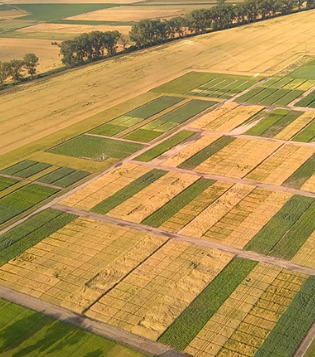Crop rotation is the practice of growing a series of dissimilar or different types, species, or families of crops in the same area in sequential seasons. Judiciously applied (i.e. selecting a suitable crop) crop rotation can improve soil structure and fertility by alternating deep-rooted and shallow-rooted plants. In turn, this enhances the soil’s sponge-like behaviour by improving structural properties, fostering root-driven infiltration pathways, and maintaining organic matter levels. These improvements reduce erosion, increase infiltration capacity, and mitigate runoff and downstream flood risks while buffering the impacts of extreme rainfall or drought.
A traditional element of crop rotation is the replenishment of nitrogen through the use of green manure in sequence with cereals and other crops. Crop rotation also mitigates the build-up of pathogens and pests that often occurs when one species is continuously cropped. However, as crop rotation has been traditionally practiced for agronomic reasons rather than to achieve environmental and water objectives, new practices may be required to ensure water retention benefits can be achieved. Some crops such as potatoes carry greater risks of erosion due to formation of ridges and the greater area of bare soil (see for example: Potato farmer’s solve soil erosion) . To achieve optimal hydrological benefits, rotation systems must be carefully tailored to local conditions and integrated with broader landscape-level strategies, such as vegetative buffers or reduced tillage. Crop rotation can be used in combination with other measures when these are compatible with crop choice.
